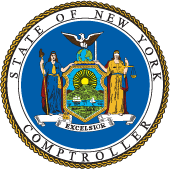Objective
To assess the extent of implementation of the nine recommendations included in our initial audit report, Physical and Financial Conditions at Selected Mitchell-Lama Developments in New York City (Report 2022-S-9).
About the Program
The Mitchell-Lama Housing program (Program) was created in 1955 by the Limited Profit Housing Act to provide affordable rental and cooperative (co-op) housing to middle-income families. A total of 269 State-supervised Mitchell-Lama developments (developments), with over 105,000 apartments, were built under the Program. In exchange for low-interest mortgage loans and real property tax exemptions, the Program required owners to comply with limitations on profit, income limits for tenants, and supervision by Homes and Community Renewal’s (HCR) Division of Housing and Community Renewal (DHCR) and by the New York City (NYC) Department of Housing Preservation and Development. Developments are owned by private companies and can exit the Program under certain conditions. DHCR works with owners as they near the end of their 20-year affordability requirements to provide low-cost financing tools that help maintain developments while also extending their affordability. As part of the State’s commitment to increase and preserve the number of affordable housing opportunities for its residents, HCR makes capital available for the preservation and improvement of these properties.
Owners often employ managing agents, persons or entities to manage the developments. It is the responsibility of the owner to provide safe and habitable housing and to maintain the physical and financial integrity of the development, and it is the function of the managing agent to effectively and efficiently manage the development to ensure that the owner’s responsibilities are carried out. Owners and managing agents must agree to manage the development in accordance with local codes and State rules and regulations. Each development has an assigned DHCR Housing Management Representative (Management Representative), who is responsible for monitoring and evaluating the development’s management, as outlined in Title 9 of the New York Codes, Rules and Regulations (Regulations). Management Representatives are required to conduct yearly on-site assessments (site visits) of a development’s physical condition as well as fiscal reviews and to provide the results, including recommendations, in a written DHCR Management Field and Office Visit Report (Report) to the development. This audit is based on a sample of four developments located in New York City: 753 Classon Avenue Housing Company (Brooklyn), Cathedral Parkway Towers (Manhattan), Findlay House (Bronx), and Jamie Towers (Bronx).
The objective of our initial audit, issued in June 2023, was to determine whether tenants living in Mitchell-Lama developments supervised by DHCR were provided safe and clean living conditions, and whether funds were properly accounted for and used for intended purposes. Our audit covered the period from January 2019 through January 2023. The audit found DHCR did not adequately oversee the physical and financial conditions at the sampled developments, likely causing management at those developments to misspend funds and fail to provide a safe and clean living environment for their residents. We observed hazardous conditions at the four developments and DHCR officials also identified hazardous conditions during their own visits but often did not share their findings with the developments in a timely manner. All four developments misspent funds under DHCR’s watch. Additionally, DHCR reported inaccurate information to the Legislature, State Comptroller, and Attorney General in the required Annual Report on Mitchell-Lama Housing Companies in New York State.
Key Findings
DHCR officials have made some progress in addressing the issues we identified in the initial audit report; however, additional improvements are needed. Of the initial report’s nine audit recommendations, one was implemented, six were partially implemented, and two were not implemented.
Key Recommendation
DHCR officials are requested, but not required, to provide information about any actions planned to address the unresolved issues discussed in this follow-up within 30 days of the report’s issuance.
Kenrick Sifontes
State Government Accountability Contact Information:
Audit Director:Kenrick Sifontes
Phone: (212) 417-5200; Email: [email protected]
Address: Office of the State Comptroller; Division of State Government Accountability; 110 State Street, 11th Floor; Albany, NY 12236
